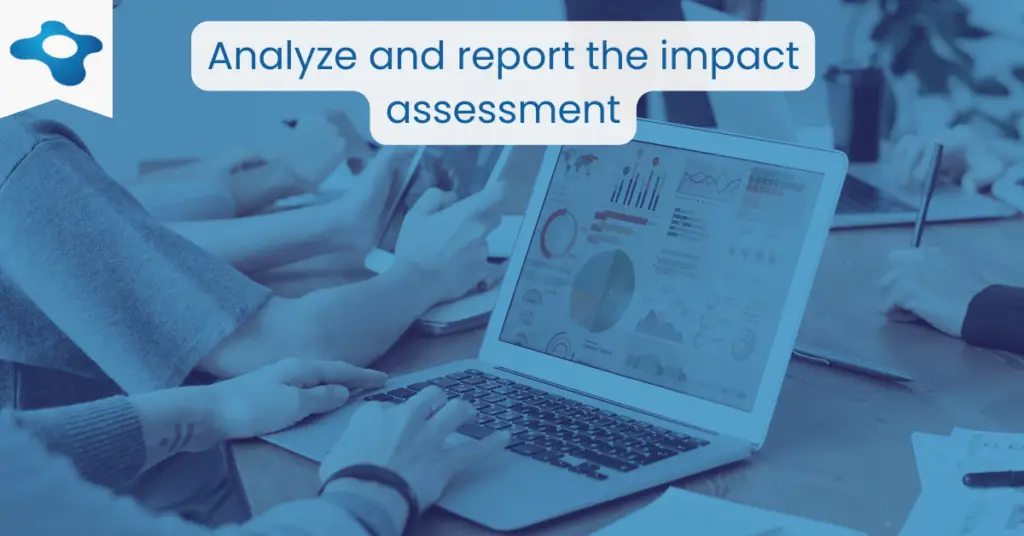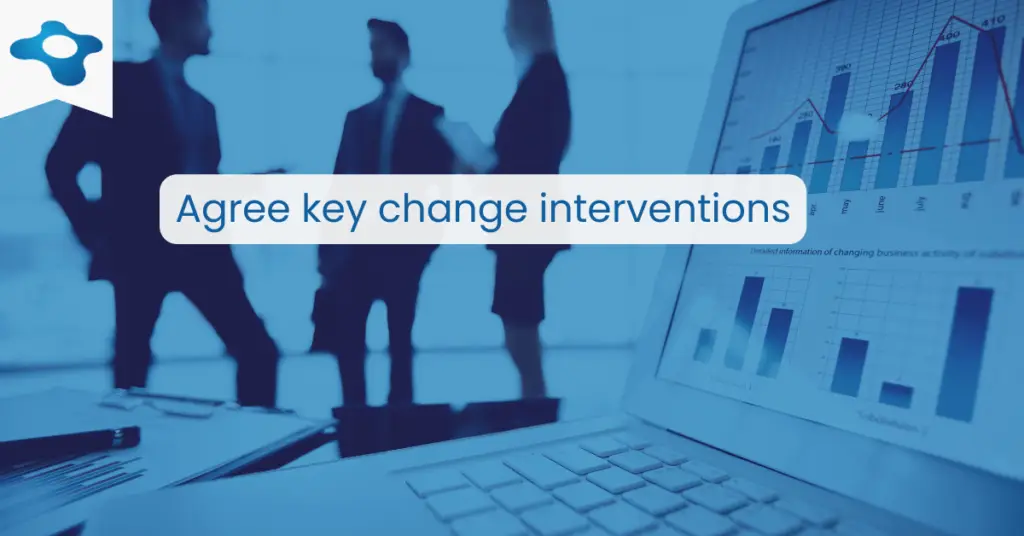Key Takeaways
- Change impact assessment is crucial for understanding the potential effects of organizational change on stakeholders, processes, and systems.
- Employ diverse techniques such as workshops, interviews, and surveys to gather valuable insights and identify areas requiring attention during change implementation.
- Prioritize and mitigate risks by developing action plans based on the results of the change impact assessment, ensuring a smooth transition for your organization.
Change impact assessment is an essential component of the change management process. It provides organizations with a systematic way to evaluate the potential effects of proposed changes on their people, processes, and technology. By understanding these impacts, businesses can make informed decisions and develop more effective change management strategies.
Conducting a change impact assessment is critical for ensuring the success of any change initiative. It helps organizations identify potential disruptions, challenges, and opportunities that may arise during the change management process. Moreover, it enables stakeholders to understand the scope of the change and its implications, paving the way for more accurate planning and resource allocation.
An in-depth assessment also lays the foundation for targeted interventions, reducing risks and increasing the likelihood of a successful transformation.
This article will explore various techniques and approaches to conducting a change impact assessment, equipping organizations with the knowledge and tools they need to navigate complex change scenarios.
We will discuss steps to define the assessment approach, gather and analyze data, report findings, and agree on key change interventions. Additionally, we will examine the benefits of change impact assessment and the risks of neglecting this crucial step in the change management process.
1. Define the Change Impact Assessment Approach

a. Steps to create an assessment approach
Creating an assessment approach for change impact begins with a clear understanding of the change objectives and the overall change management process. Next, consider the unique characteristics of the organization, such as its size, culture, and industry. The following steps can help guide the creation of an effective assessment approach:
- Identify the key stakeholders and their concerns.
- Determine the scope of the assessment, including which areas of the organization will be affected.
- Choose the appropriate assessment techniques, based on the nature and magnitude of the change.
- Establish a timeline and milestones for conducting the assessment.
b. Importance of aligning the approach with organizational objectives and culture
Aligning the assessment approach with organizational objectives and culture is crucial for ensuring that the results of the impact assessment are meaningful and actionable. This alignment helps ensure that the assessment addresses the most relevant concerns and that the resulting change interventions are tailored to the specific needs of the organization. By considering the organization’s goals and culture, the assessment approach can better support the change management process and contribute to a successful transformation.
c. Tips for selecting the right assessment techniques
Selecting the right assessment techniques is vital for obtaining accurate and comprehensive insights into the potential impacts of a change initiative. Here are some tips for choosing the most appropriate techniques:
- Consider the size and complexity of the change: Large-scale changes may require more in-depth analysis and data collection, while smaller changes may benefit from simpler, more focused techniques.
- Take into account the organization’s culture: Some techniques, such as workshops and surveys, may be more effective in organizations with a collaborative and open culture. In contrast, interviews may be more suitable for organizations with a hierarchical structure.
- Balance quantitative and qualitative data: Utilize a mix of techniques that provide both numerical data and rich, contextual insights to ensure a comprehensive understanding of the change impacts.
- Be open to iteration: As the change management process unfolds, be prepared to refine the assessment techniques and approach based on evolving needs and insights.
2. Conduct the Change Impact Assessment

a. Gathering data through interviews, workshops, and surveys
Data collection is a critical component of the change impact assessment process. A variety of techniques can be employed to gather the necessary information, including:
- Interviews: One-on-one conversations with stakeholders provide in-depth insights into individual perspectives and concerns regarding the change. These interviews can be conducted in person, over the phone, or via video conferencing.
- Workshops: Group sessions facilitate collaboration and open discussion among stakeholders, promoting a shared understanding of the change impacts and potential solutions. Workshops can be structured or unstructured, depending on the organization’s culture and the nature of the change.
- Surveys: Questionnaires distributed to a larger group of stakeholders enable the collection of quantitative data and broader perspectives on the change impacts. Surveys can be administered online or in print and can include a mix of closed and open-ended questions.
b. Techniques for evaluating the impact on people, processes, and technology
Evaluating the impact of a change initiative requires analyzing the effects on people, processes, and technology within the organization. Some techniques for evaluating these impacts include:
- Impact analysis: Systematically examining the potential consequences of the change on stakeholders, work processes, and technological systems, and identifying areas of potential disruption or opportunity.
- Dependency mapping: Identifying the relationships and dependencies between various organizational elements, such as teams, processes, and systems, to better understand the ripple effects of the change.
- Gap analysis: Assessing the differences between the current state of the organization and the desired future state, helping to pinpoint the areas that will be most affected by the change.
c. The role of the Change Impact Interview Aid and Change Impact Analysis Worksheet
The Change Impact Interview Aid and Change Impact Analysis Worksheet are valuable tools for conducting a thorough impact assessment. The Change Impact Interview Aid provides a structured approach to conducting stakeholder interviews, ensuring that all relevant topics are covered and facilitating more consistent data collection.
The Change Impact Analysis Worksheet offers a framework for organizing and analyzing the collected data, enabling a more systematic evaluation of the change impacts on people, processes, and technology.
Using these tools in combination can help ensure a comprehensive and actionable understanding of the change impacts, supporting more effective change management planning and execution.
3. Analyze and Report the Change Impact Assessment

a. Methods for analyzing and visualizing data
Once data has been collected, it is essential to analyze and visualize it effectively to support decision-making. Various techniques can be employed to organize and understand the data, such as:
- Data categorization: Sorting the collected information into relevant categories, such as stakeholder groups, impact types, or functional areas, facilitates a more structured analysis.
- Descriptive statistics: Calculating measures like averages, frequencies, and percentages helps to summarize the data and identify trends or patterns.
- Data visualization: Creating graphical representations of the data, such as bar charts, pie charts, or line graphs, allows stakeholders to more easily grasp the findings and their implications.
b. Creating a Change Impact Heat Map to identify high-impact areas
A Change Impact Heat Map is a useful tool for visualizing the distribution of change impacts across the organization. This graphical representation employs a color-coded system to highlight areas with the most significant impacts, enabling stakeholders to quickly identify high-priority areas requiring attention.
By focusing on these high-impact areas, organizations can better allocate resources and develop targeted change interventions to address potential disruptions or capitalize on opportunities.
c. Best practices for presenting assessment findings to stakeholders
When presenting the results of a change impact assessment to stakeholders, consider the following best practices to ensure clear and compelling communication:
- Tailor the message: Customize the presentation to the audience’s needs, interests, and level of familiarity with the change initiative.
- Focus on key findings: Emphasize the most important insights and avoid overwhelming the audience with excessive detail.
- Use visuals: Incorporate charts, graphs, and other visuals to enhance the presentation and make the findings more accessible.
- Encourage dialogue: Invite feedback and questions from the audience to promote engagement and foster a collaborative approach to addressing the change impacts.
By following best practices, organizations can more effectively communicate the results of the change impact assessment, fostering a shared understanding of the challenges and opportunities and promoting buy-in for the necessary change interventions.
4. Agree Key Change Interventions

a. Developing targeted change management strategies based on assessment findings
Armed with the insights from the change impact assessment, organizations can develop targeted change management strategies to address the identified impacts. These strategies should be closely aligned with the organization’s overall objectives and tailored to the unique needs of the affected stakeholder groups.
By basing change interventions on the assessment findings, organizations can more effectively minimize disruptions and leverage opportunities arising from the change initiative.
b. Utilizing the Change Dimensions Diagnostic tool to prioritize interventions
The Change Dimensions Diagnostic tool can be a valuable resource for prioritizing change interventions. This tool helps organizations assess the magnitude of change across various dimensions, such as people, processes, and technology, and identify the areas that require the most attention.
By focusing on high-priority dimensions, organizations can optimize their resources and efforts, ensuring that the most critical issues are addressed first.
c. Tips for gaining stakeholder buy-in for proposed interventions
To ensure the success of change interventions, it is crucial to gain stakeholder buy-in. Here are some tips for promoting support and commitment among stakeholders:
- Communicate openly and transparently: Share information about the proposed interventions, their rationale, and the expected benefits. Address any concerns and provide regular updates to keep stakeholders informed.
- Involve stakeholders in the decision-making process: Engage stakeholders in the development and implementation of change interventions, soliciting their input and incorporating their feedback.
- Highlight the benefits: Clearly articulate how the proposed interventions will benefit stakeholders, both individually and collectively, and help the organization achieve its strategic objectives.
- Provide support and resources: Offer training, coaching, and other resources to help stakeholders adapt to the changes and develop the necessary skills and capabilities.
By following these tips, organizations can foster a collaborative approach to change management, ensuring that stakeholders are committed to and invested in the success of the change interventions.
Change Impact Assessment: Benefits if Used

a. How impact assessments reduce risks and increase project success rates
Change impact assessments play a vital role in reducing risks and increasing the likelihood of successful change initiatives. By systematically identifying and evaluating the potential impacts of a change, organizations can develop more informed and targeted change management strategies.
This proactive approach enables organizations to address potential issues before they escalate, ultimately minimizing disruptions and facilitating a smoother transition.
b. The value of clear insights into challenges and opportunities for change leadership
Change impact assessments provide change leaders with valuable insights into the challenges and opportunities associated with a change initiative. These insights can inform decision-making and help change leaders allocate resources more effectively, prioritize interventions, and ensure alignment with the organization’s strategic objectives.
Furthermore, a clear understanding of the change impacts can foster better communication and collaboration among stakeholders, promoting buy-in and support for the change initiative.
c. Case studies demonstrating the benefits of change impact assessment
Numerous case studies highlight the benefits of conducting change impact assessments. For example, a global manufacturing company successfully implemented a major ERP system overhaul after conducting a thorough change impact assessment. The assessment allowed the company to identify high-impact areas, develop targeted change interventions, and effectively manage stakeholder expectations, resulting in a smooth transition and minimal disruption to operations.
In another case, a financial services firm used change impact assessment to guide a significant organizational restructuring, ensuring that the new structure aligned with the company’s strategic goals and minimized negative impacts on employees.
These examples underscore the value of change impact assessments in driving successful change initiatives.
Change Impact Assessment: Risks if Ignored

a. Potential consequences of not understanding people and change impacts
Ignoring change impact assessment can lead to unintended consequences, as organizations may not fully understand the implications of a change on their people, processes, and technology.
This lack of understanding can result in increased resistance to change, reduced employee engagement, and ultimately, decreased organizational performance.
b. Increased risk of project failure due to inadequate strategy and planning
Without a thorough change impact assessment, organizations may develop inadequate change management strategies and plans that fail to address critical issues.
This oversight can lead to project delays, cost overruns, and even project failure, as organizations struggle to manage unforeseen challenges that arise during the change process.
c. Real-world examples of negative outcomes caused by ignoring change impact assessment
In one instance, a company that failed to conduct a change impact assessment during a major systems upgrade experienced significant operational disruptions and employee dissatisfaction. The lack of assessment led to insufficient training and communication, leaving employees unprepared for the changes. The resulting chaos negatively impacted productivity and customer satisfaction, ultimately hurting the company’s bottom line. This example highlights the importance of conducting a change impact assessment to minimize risks and ensure a successful change management process.
In summary, an effective change impact assessment is a crucial part of the change management process. The key steps include defining the assessment approach, conducting the impact assessment, analyzing and reporting the assessment findings, and agreeing on key change interventions.
A thorough assessment provides valuable insights into the challenges and opportunities arising from change, enabling organizations to develop targeted change management strategies and reduce risks. By understanding the potential impacts on people, processes, and technology, organizations can increase project success rates and drive positive outcomes.
We encourage you to apply the techniques and approaches discussed in this article to your organization’s change initiatives. By incorporating a comprehensive change impact assessment into your change management process, you can better navigate the complexities of change and ensure a smoother transition for your organization.


